#philippines campaign
Video
A rear gunner who was killed by Japanese anti-aircraft fire during a raid on Manila Bay, Philippines, is given a burial at sea in his TBF Avenger on USS Essex, November 1944
728 notes
·
View notes
Text
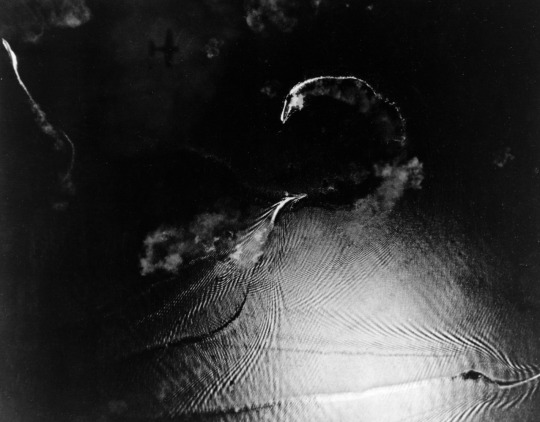
"Japanese warships, including a Yamato-class battleship, maneuvering while under attack by Task Force 38 Aircraft, in the Tablas Strait, Philippines. One of the attacking planes shadow shows on a cloud above the Japanese ships."
Date: October 24, 1944
NHHC: 80-G-432481
#Yamato Class#Japanese Battleship#Battleship#Warship#Ship#Imperial Japanese Navy#IJN#Battle of the Sibuyan Sea#Battle of Leyte Gulf#Philippines campaign#Pacific Theater#World War II#World War 2#WWII#WW2#WWII History#History#Military History#October#1944#Tablas Strait#Philippines#my post
20 notes
·
View notes
Photo

Construction d'une jetée de sacs de sables dans les vagues pour accélérer les opérations de déchargement du matériel des navires de débarquement de chars (Landing Ship Tank) LST-22 et LST-206 – Campagne des Philippines – Bataille de Leyte – Ile de Leyte – Philippines – Octobre 1944
#WWII#Guerre du Pacifique#Pacific War#Pacifique du Sud-Ouest#South-West Pacific#Campagne des Philippines#Philippines campaign#Bataille de Leyte#Battle of Leyte#armée américaine#US Army#Débarquement#Landing#Landing Ship Tank#LST#Ile de Leyte#Leyte Island#Les Philippines#10/1944#1944
10 notes
·
View notes
Photo
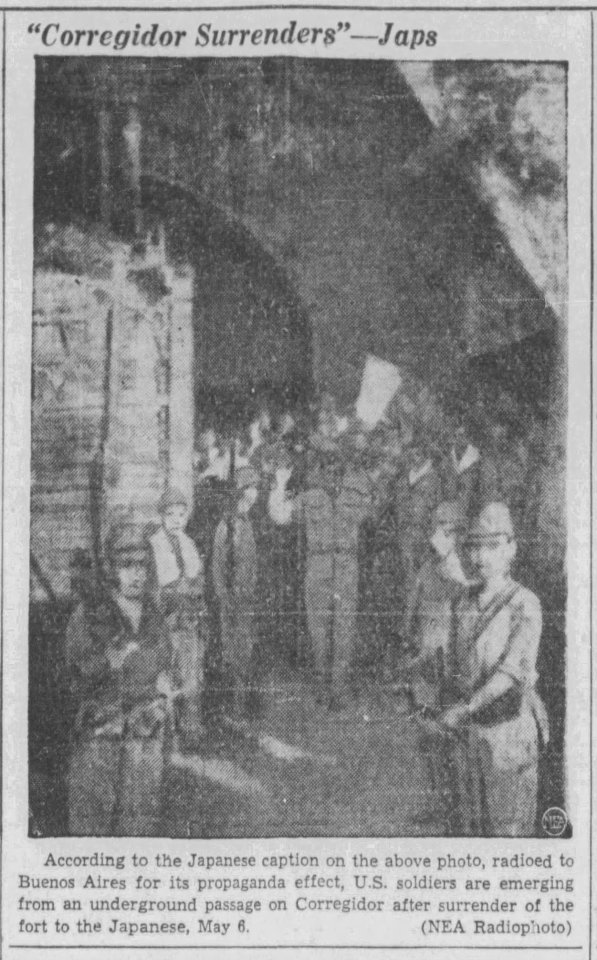
““Corregidor Surrender”— Japs,” Kingston Whig-Standard. June 17, 1942. Page 11.
----
According to the Japanese caption on the above photo radioed to Buenos Aires for its propaganda effect, U.S. soldiers are emerging from an underground passage on Corregidor after surrender of the fort to the Japanese May 6.
(NEA Radiophoto)
#philippines campaign#corregidor#fall of the philippines#surrender#bataan peninsula#war propaganda#imperial japanese army#united states army#world war II#pacific war
3 notes
·
View notes
Text
On May 28, 1914, the Institut für Schiffs-und Tropenkrankheiten (Institute for Maritime and Tropical Diseases, ISTK) in Hamburg began operations in a complex of new brick buildings on the bank of the Elb. The buildings were designed by Fritz Schumacher, who had become the Head of Hamburg’s building department (Leiter des Hochbauamtes) in 1909 after a “flood of architectural projects” accumulated following the industrialization of the harbor in the 1880s and the “new housing and working conditions” that followed. The ISTK was one of these projects, connected to the port by its [...] mission: to research and heal tropical illnesses; [...] to support the Hamburg Port [...]; and to support endeavors of the German Empire overseas.
First established in 1900 by Bernhard Nocht, chief of the Port Medical Service, the ISTK originally operated out of an existing building, but by 1909, when the Hamburg Colonial Institute became its parent organization (and Schumacher was hired by the Hamburg Senate), the operations of the ISTK had outgrown [...]. [I]ts commission by the city was an opportunity for Schumacher to show how he could contribute to guiding the city’s economic and architectural growth in tandem, and for Nocht, an opportunity to establish an unprecedented spatial paradigm for the field of Tropical Medicine that anchored the new frontier of science in the German Empire. [...]
[There was a] shared drive to contribute to the [...] wealth of Hamburg within the context of its expanding global network [...]. [E]ach discipline [...] architecture and medicine were participating in a shared [...] discursive operation. [...]
---
The brick used on the ISTK façades was key to Schumacher’s larger Städtebau plan for Hamburg, which envisioned the city as a vehicle for a “harmonious” synthesis between aesthetics and economy. [...] For Schumacher, brick [was significantly preferable] [...]. Used by [...] Hamburg architects [over the past few decades], who acquired their penchant for neo-gothic brickwork at the Hanover school, brick had both a historical presence and aesthetic pedigree in Hamburg [...]. [T]his material had already been used in Die Speicherstadt, a warehouse district in Hamburg where unequal social conditions had only grown more exacerbated [...]. Die Speicherstadt was constructed in three phases [beginning] in 1883 [...]. By serving the port, the warehouses facilitated the expansion and security of Hamburg’s wealth. [...] Yet the collective profits accrued to the city by these buildings [...] did not increase economic prosperity and social equity for all. [...] [A] residential area for harbor workers was demolished to make way for the warehouses. After the contract for the port expansion was negotiated in 1881, over 20,000 people were pushed out of their homes and into adjacent areas of the city, which soon became overcrowded [...]. In turn, these [...] areas of the city [...] were the worst hit by the Hamburg cholera epidemic of 1892, the most devastating in Europe that year. The 1892 cholera epidemic [...] articulated the growing inability of the Hamburg Senate, comprising the city’s elite, to manage class relationships [...] [in such] a city that was explicitly run by and for the merchant class [...].
In Hamburg, the response to such an ugly disease of the masses was the enforcement of quarantine methods that pushed the working class into the suburbs, isolated immigrants on an island, and separated the sick according to racial identity.
In partnership with the German Empire, Hamburg established new hygiene institutions in the city, including the Port Medical Service (a progenitor of the ISTK). [...] [T]he discourse of [creating the school for tropical medicine] centered around city building and nation building, brick by brick, mark by mark.
---
Just as the exterior condition of the building was, for Schumacher, part of a much larger plan for the city, the program of the building and its interior were part of the German Empire and Tropical Medicine’s much larger interest in controlling the health and wealth of its nation and colonies. [...]
Yet the establishment of the ISTK marked a critical shift in medical thinking [...]. And while the ISTK was not the only institution in Europe to form around the conception and perceived threat of tropical diseases, it was the first to build a facility specifically to support their “exploration and combat” in lockstep, as Nocht described it.
The field of Tropical Medicine had been established in Germany by the very same journal Nocht published his overview of the ISTK. The Archiv für Schiffs- und Tropen-Hygiene unter besonderer Berücksichtigung der Pathologie und Therapie was first published in 1897, the same year that the German Empire claimed Kiaochow (northeast China) and about two years after it claimed Southwest Africa (Namibia), Cameroon, Togo, East Africa (Tanzania, Burundi, Rwanda), New Guinea (today the northern part of Papua New Guinea), and the Marshall Islands; two years later, it would also claim the Caroline Islands, Palau, Mariana Islands (today Micronesia), and Samoa (today Western Samoa).
---
The inaugural journal [...] marked a paradigm shift [...]. In his opening letter, the editor stated that the aim of Tropical Medicine is to “provide the white race with a home in the tropics.” [...]
As part of the institute’s agenda to support the expansion of the Empire through teaching and development [...], members of the ISTK contributed to the Deutsches Kolonial Lexikon, a three-volume series completed in 1914 (in the same year as the new ISTK buildings) and published in 1920. The three volumes contained maps of the colonies coded to show the areas that were considered “healthy” for Europeans, along with recommended building guidelines for hospitals in the tropics. [...] "Natives" were given separate facilities [...]. The hospital at the ISTK was similarly divided according to identity. An essentializing belief in “intrinsic factors” determined by skin color, constitutive to Tropical Medicine, materialized in the building’s circulation. Potential patients were assessed in the main building to determine their next destination in the hospital. A room labeled “Farbige” (colored) - visible in both Nocht and Schumacher’s publications - shows that the hospital segregated people of color from whites. [...]
---
Despite belonging to two different disciplines [medicine and architecture], both Nocht and Schumacher’s publications articulate an understanding of health [...] that is linked to concepts of identity separating white upper-class German Europeans from others. [In] Hamburg [...] recent growth of the shipping industry and overt engagement of the German Empire in colonialism brought even more distant global connections to its port. For Schumacher, Hamburg’s presence in a global network meant it needed to strengthen its local identity and economy [by purposefully seeking to showcase "traditional" northern German neo-gothic brickwork while elevating local brick industry] lest it grow too far from its roots. In the case of Tropical Medicine at the ISTK, the “tropics” seemed to act as a foil for the European identity - a constructed category through which the European identity could redescribe itself by exclusion [...].
What it meant to be sick or healthy was taken up by both medicine and architecture - [...] neither in a vacuum.
---
All text above by: Carrie Bly. "Mediums of Medicine: The Institute for Maritime and Tropical Diseases in Hamburg". Sick Architecture series published by e-flux Architecture. November 2020. [Bold emphasis and some paragraph breaks/contractions added by me. Text within brackets added by me for clarity. Presented here for commentary, teaching, criticism purposes.]
#abolition#ecology#sorry i know its long ive been looking at this in my drafts for a long long time trying to condense#but its such a rich comparison that i didnt wanna lessen the impact of blys work here#bly in 2022 did dissertation defense in architecture history and theory on political economy of steel in US in 20s and 30#add this to our conversations about brazilian eugenics in 1930s explicitly conflating hygiene modernist architecture and white supremacy#and british tropical medicine establishment in colonial india#and US sanitation and antimosquito campaigns in 1910s panama using jim crow laws and segregation and forcibly testing local women#see chakrabartis work on tropical medicine and empire in south asia and fahim amirs cloudy swords#and greg mitmans work on connections between#US tropical medicine schools and fruit plantations in central america and US military occupation of philippines and rubber in west africa
13 notes
·
View notes
Text
anyways now that I'm back on this site, let it be well fucking known that this filipino musical theatre rambler absolutely abhors the Here Lies Love musical and I am absolutely ashamed that it is gonna be known as the first Broadway musical with an all-filipino/fil-am cast BECAUSE GLORIFYING A PERSON (imelda marcos) INVOLVED IN A CONJUGAL DICTATORSHIP (wife of ferdinand marcos) THAT CAUSED HUNDREDS OF DEATHS AND AN ECONOMIC CRISIS DUE TO ILLEGALLY ACCUMULATED WEALTH FROM PHILIPPINE TAXES ESPECIALLY WHILE SAID PERSON IS STILL ALIVE WITH HER SON (ferdinand "bongbong" marcos jr) BACK IN POWER IS ALL SORTS OF WRONG
#fjdjfjsjjds#aNYWAYS FOR THE BENEFIT OF EVERYONE AND FOR MY OWN SANITY WE ARE GONNA HOLD HISTORY NIGHTS ON THIS BLOG#sOON#WHERE I WILL PERSONALLY DISCUSS ALL THE SHITTY THINGS THE MARCOSES HAVE DONE#aND YES HERE LIES LOVE SAYS ITS AN ANTI-MARCOS SHOW#bUT IT ROMANTICIZES IMELDA MARCOS' ROLE IN THE FUCKING DICTATORSHIP!! SHE IS JUST AS FUCKING GUILTY AS HER HUSBAND!!#AND IN THE PRESENT CONTEXT OF MARCOS JR BEING ABLE TO SWEET HIS WAY BACK INTO PRESIDENCY#tHROUGH A MASS DISINFORMATIKN CAMPAIGN#THIS COMES ACROSS AS FUCKING PROPAGANDA AND I FUCKING HATE IT SO MUCH WHAT THE FUCK#anyways i will be side eyeing all filipino actors that will involve themselves with here lies love because come on#know your damn history#philippines#here lies love#fuck the marcoses
59 notes
·
View notes
Text
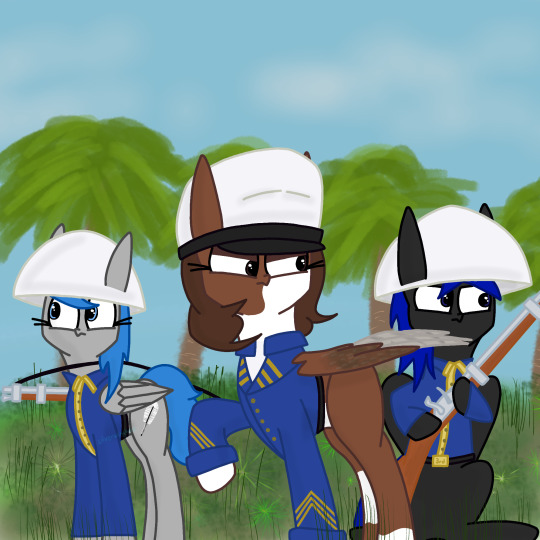
Chasseurs Tagals and the First Vietnam War
Often forgotten in history is the Cochinchina campaign of 1858 to 1863, which was the first major confrontation between Western nations and a Vietnamese state. Sparked by the executions and arrest of European missionaries and converted Christian natives in Vietnamese territory, the French Empire, along with Spanish Empire, decided to intervene and prevent further prosecution.
With the garrison in Philippine colony being the closest force Spain had to Vietnam, it was from here the Spanish contingent would be taken from. The Governor-General of the Philippines would assign the 1st King's Regiment, the 2nd Queens Regiment, and the 3rd Regiment of Ferdinado VII to Vietnam. All three units would be officered by Europeans, with native Filipino soldiers composing the main fighting force.
Dubbed by their French counterparts as Chasseurs Tagals (Probably because most of the soldiers came from the Tagalog region of the Philippines), these troops would serve in the occupation of the Tourane's forts and participate in the capture of Saigon, the main port in the Cochinchina area.
In the battle for Saigon, the Chasseurs Tagals would make a name for themselves, as they stormed the citadel of Saigon, being some of the first troops atop its walls.
After the siege, these Filipino troops would assist in the occupation of the port city, garrisoning fortifications and patroling the nearby countryside.
By 1862 a peace treaty would be signed by the French, Spanish, and Vietnamese state. Under the agreement, the Cochinchina provinces would be annexed by the French, while the Spanish would receive a monetary compensation worth 4 million dollars.
The Chasseurs Tagals would remain in Cochinchina to help maintain control over it against rebellions. However, by 1863 the Spanish contingent would be withdrawn and the Filipino troops would return back to the Philippines.
A century later, Filipino troops under the Philippine Civic Action Group - Vietnam would return to the country and participate in another Vietnam War.
----------------------------------------
Depicted here is a patrol from the 3rd Regiment of Ferdinado VII. FairChild (@temper-temper) as a Sergeant leads a patrol composed of Zaffre Blue (@techbro-arts) and me.
#Silver Wing#FairChild#temper-temper#Zaffre Blue#techbro-arts#Art#Random Art#MLP#My Little Pony#Pegasus#History#Cochinchina Campaign#Philippine History#Vietnamese History#Chasseurs Tagals#Okay temper I knew I had to add you in the piece#Because Vietnam#Okay its a different Vietnam war to what you know#But I think you'll find it very interesting#Also techbro thanks for letting me steal your OC again#I'll eventually draw more art of your OCs than you will
12 notes
·
View notes
Text

Inka (inkmagnaye on Twitter)
People are already confidently proclaiming that Ferdinand Marcos was not a dictator, but the best president the Philippines ever had.
To all the victims of Martial Law, I’m so sorry.
I want to apologize to my late grandmother.
I want to apologize to my dead lola who told me that she had to hide with her famiy just to get through the Marcosian Martial Law era.
I want to apologize to my lola who told me how fearful she was every night, thinking about the safety of her famiy and of herself.
I want to apologize to my lola who, among her five children, has at least one child along with her grandchildren who firmly believe that Ferdinand E. Marcos, Sr. was a good man who brought the “Golden Era” of the Philippines.
I want to apologize to her.
And yet, I'm sure she would calmly tell me, “Hayaan mo na sila.” [Let them be.]
...
...and if that's what she may actually say, then I will, Lola.
Pero Lola, tandaan mo ito, kung nakikita mo itong post ko mula sa afterlife.
Hindi ko hahayaang mabura ng mga Marcos ang alaala mo
at lalong hindi ko hahayaang mabura ang kasaysayan ng bawat Pilipino noong panahon ng Batas Militar sa ilalim ni Ferdinand Marcos.
I will not let your memory die.
I will fight for it.
I will fight for you, lola. Ako na ng bahala dito.
Nawa'y maging mapayapa ang pahinga mo.
Basta ako... ako na ang lalaban para sa iyo.
#[ 🗣️ | the magical girl speaks ]#philippines#philippine politics#philippine national elections#philippine national elections 2022#halalan 2022#elections 2022#2022 elections#ferdinand marcos#marcos#martial law#holy fuck i cried while writing this post#lola sorry ha#di ko alam kung ano iniisip nila tita at ng mga pinsan ko#baka biktima lang naman rin sila ng dis- at misinformation campaign ng mga marcos#basta hindi ako magpapatalo sa mga marcos lola#lalaban ako para sa iyo lola#haha fuck gonna cry again#ok tama na isa. this is enough
23 notes
·
View notes
Text
Sun Life and Donny Pangilinan team up to promote health and financial wellness
There’s no question about it: it’s Donny Pangilinan’s time to shine. The young star has projects left and right, numerous billboards that sport his charming smile, and a fandom that is incredibly supportive of his engagements.
Donny is making the most of the opportunities coming his way. However, the glitz and glamor of showbiz can easily distract from the reality that it all comes with hard…

View On WordPress
#SunLifeWheelOfLife#Donny Pangilinan#financial wellness#health#health campaign#investments#mental health#physical health#press release#savings#Sun Life Cycle PH#sun life philippines#workout schedule#young generation
2 notes
·
View notes
Text
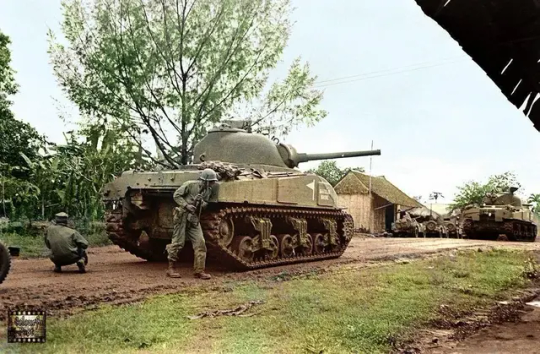
February 1945. A composite hull M4 Sherman tank of Company 'B' U.S. 44th Tank Bn. named 'Battlin Basic' with soldiers, most likely from the 37th Div., on the outskirts of Manila, Philippines.
#battle of manila#battle of luzon#philippines campaign#pacific theater#m4 sherman#tanks#american armor#american tanks#wwii
151 notes
·
View notes
Text

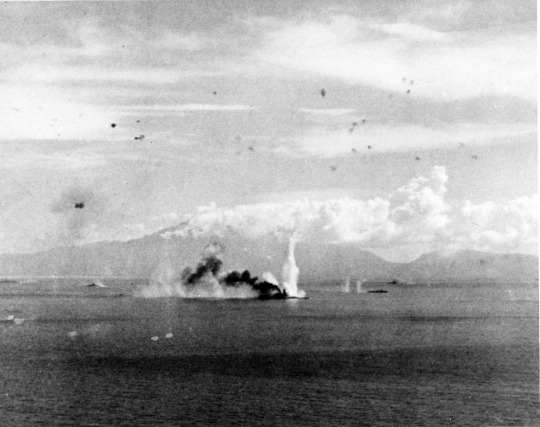
Japanese Battleship Musashi (武蔵, Musashi Province) under heavy attack during the Battle of the Sibuyan Sea. Musashi is being attacked by Task Force 38 aircraft.
Date: October 24, 1944
Naval History and Heritage Command: 80-G-281765, 80-G-281766
Colorized by Irootoko Jr: link
#Japanese Battleship Musashi#Musashi#Yamato Class#Japanese Battleship#Battleship#Warship#Ship#Imperial Japanese Navy#IJN#Battle of the Sibuyan Sea#Battle of Leyte Gulf#Philippines campaign#Pacific Theater#October#1944#Task Force 38#my post
18 notes
·
View notes
Text

Un soldat américain avec des philippines après l'invasion du golfe de Lingayen – Campagne des Philippines (1944-1945) – Guerre du Pacifique – Dagupan – Luçon – Philippines – 18 janvier 1945
#WWII#guerre du pacifique#pacific war#campagne des philippines (44-45)#philippines campaign (44-45)#invasion du golfe de lingayen#invasion of lingayen gulf#enfants de la guerre#children in war#dagupan#luçon#luzon#philippines#18/01/1945#01/1945#1945
33 notes
·
View notes
Photo

“Jap Fliers Captured in Phillipines,” Sault Star. April 2, Page 1.
----
These two Japanese fliers were shot down and captured during an air raid on Manila during the early days of the war in the Philippines. This photo, released in Washington, is one of the first to reach the U.S. from the islands since the Japs struck their treacherous blow in the Pacific.
#philippines campaign#manila#air raid#shot down#フィリピンの戦い#imperial japanese navy air service#大日本帝國海軍航空隊#pacific war#world war II#prisoners of war#imperial japanese navy#empire of japan
3 notes
·
View notes
Text
(2/2) The Robredo People's Campaign
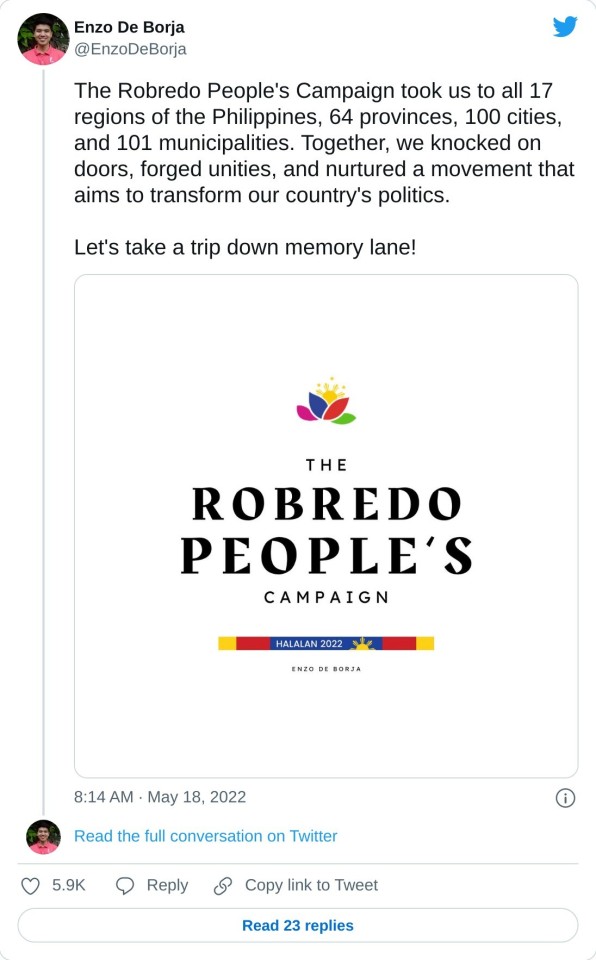
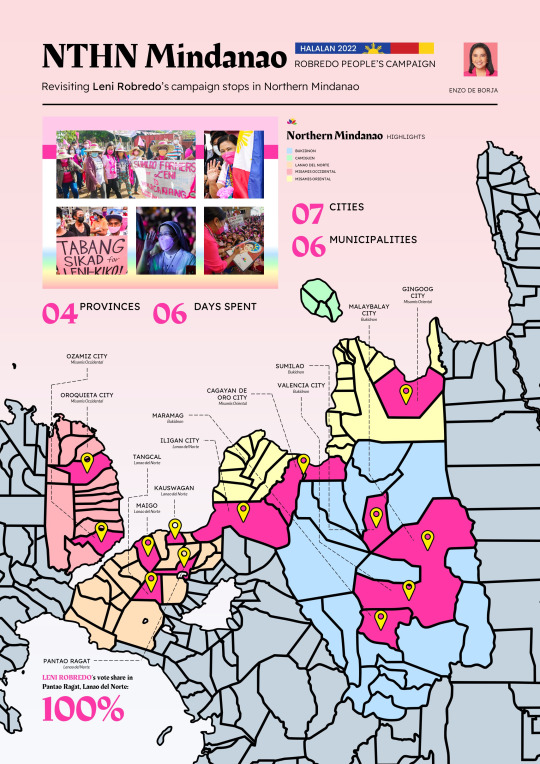






Ang mga larawan ay kuha mula sa Twitter account ni Enzo de borja
Ang mga datos ay makikita sa ibinahaging spreadsheet ni Enzo de Borja
#kalakian#leni robredo#pink revolution#peoples campaign#angat buhay lahat#kulay rosas ang bukas#philippine politics#philippines#pilipinas#pilipino#filipino
9 notes
·
View notes
Photo
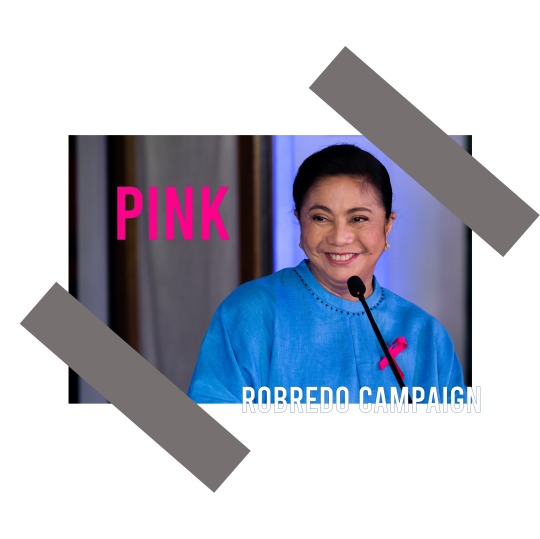
Pink • Robredo Campaign
Hume rejects the fact that beauty is in the eye of the beholder. He accepts that everyone has the capacity to see beauty, but not everyone has the same capacity to appreciate it.
This is evident in one of the most simple components of art: colours. People associate colours with so many things, from ideas, to moods, some even use them as names. This is because colours evoke something in a person which is far beyond words can express. Colours are a window by which we can see the world. Someone wearing black to a wedding in the Philippines is considered disrespectful and a faux-pas.
Thus, it is no longer surprising that many people have the same connotations with the same colours.
In October last year, VP Leni Robredo expressed her readiness to take the helm of the country as she made her presidential bid official. VP Robredo herself said that with no specific colour in mind, they opted for Blue because of her daughters’ connection with the Ateneo, hence the blue dress. However, during the time for the official launching of her bid, supporters wore pink. Thus became the beginning of the journey which is now known as the Pink Movement.
The Pink Movement has reignited the spirit of volunteerism in the Philippines. Robredo’s supporters are a grassroots-led initiative, which initially posed a challenge for the controlling of the proper messaging
Applying Hume’s logic in the campaign, we can see that the choosing of the colour pink is not merely an aesthetic choice, but is also emotionally driven. Many people saw that pink was not only pleasing to the eye, but it was also a colour which was unassociated with any movement in the Philippine Political Sphere which made it a prime colour for reinvention, innovation, but most of all, hope.
Looking back at the campaign, the choosing of the colour pink was a call not only for the unification of people for the same cause, it was also a unification of the people by the people — which embodies the spirit of everything the Robredo Campaign stands for.
6 notes
·
View notes
Quote
His social media campaign has proved so successful there are fears this will now be the model for future elections in the Philippines, with the mainstream media sidelined, and a blizzard of fact-free narratives competing online. His family's return to power also neatly bookends the optimistic age of globalisation. This arguably began when the US refused to support his autocratic father in the waning years of the Cold War, inspiring pro-democracy movements across the world. It has now come to an end with the war in Ukraine, the breakdown of China-US relations, and the rise of populist leaders riding a tsunami of social media disinformation.
Jonathan Head, ‘What the Marcos' return to power means for the Philippines’, BBC
#BBC#Jonathan Head#social media campaign#Philippines#mainstream media#globalisation#United States#Cold War#Ferdinand Marcos#China-US relations#2022 Russian invasion of Ukraine#pro-democracy movements#populism#social media disinformation
5 notes
·
View notes